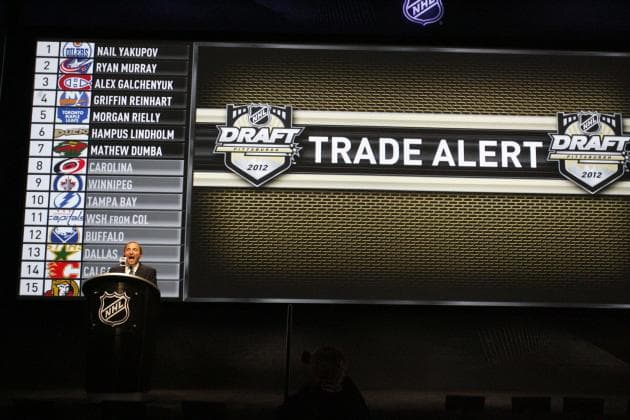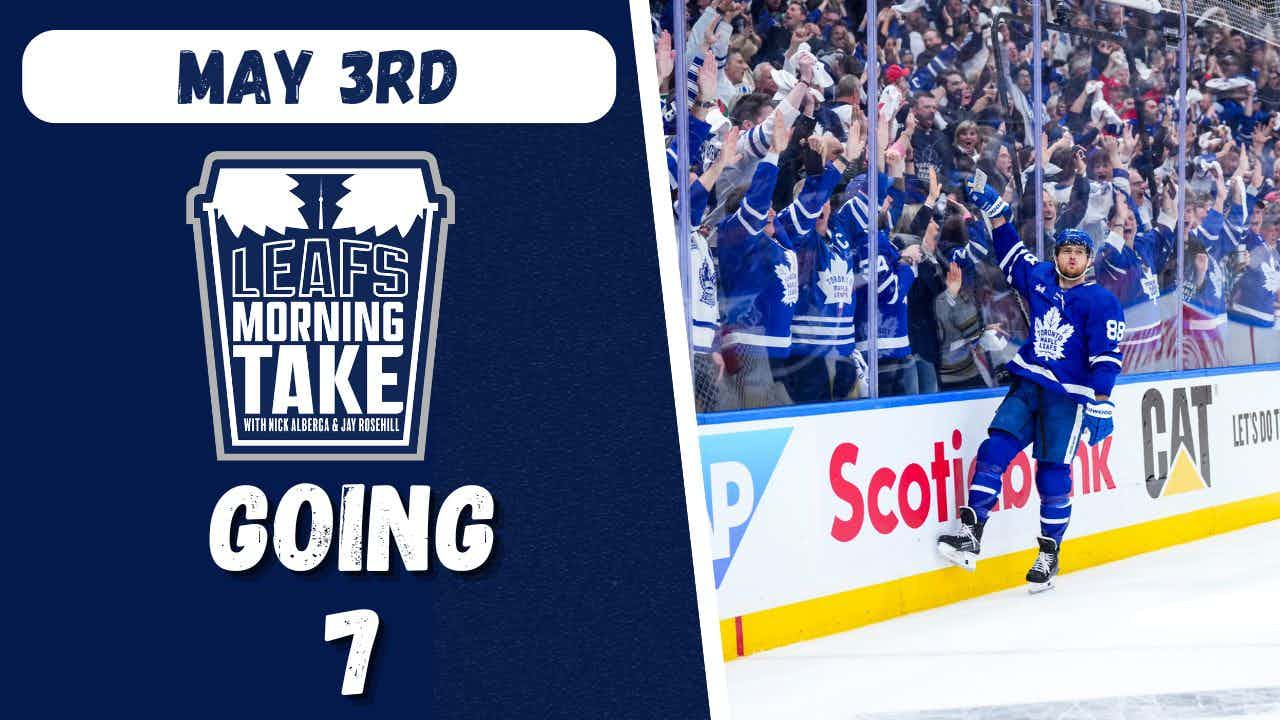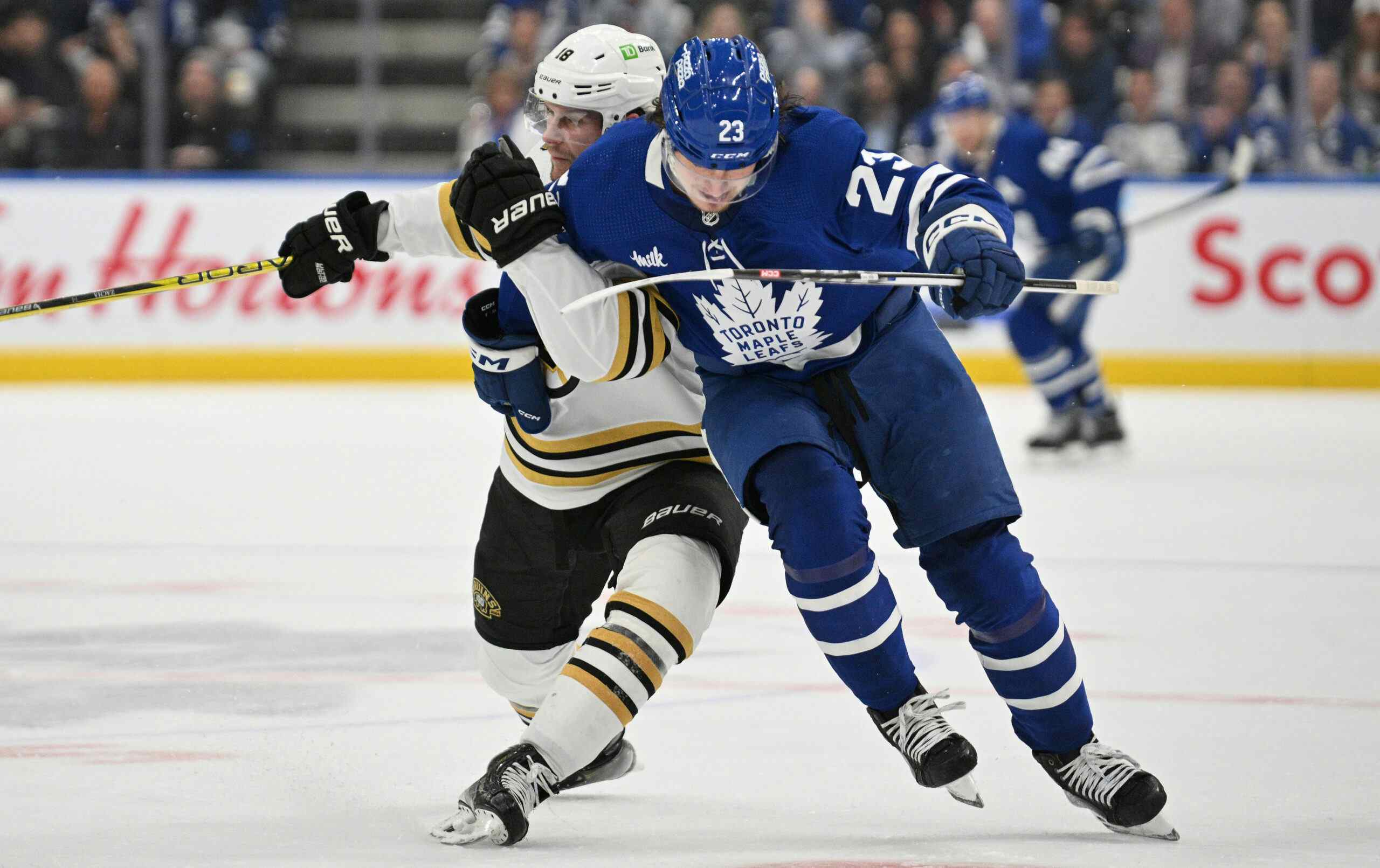A Twitter User’s Guide to NHL Rumours

By Mark Norman
3 years agoThe Stanley Cup will be presented no later than Wednesday, September 30th which means the NHL’s silly season (a.k.a Free Agency) will soon be upon us come October 9th. With that comes increased chatter and rumour-mongering on social media as the intrigue of “where will they go?” builds into a fury of speculation. Free Agency is basically The Bachelor, but the partnerships last longer and there’s more toothlessness.
With the Maple Leafs destined to be the centre of discussion due to the evolving Alex Pietrangelo situation and their need to shift things around due to the flat cap reality of a post-COVID world, now may be a good time to do some fall cleaning of who you follow on Twitter so you can avoid being bamboozled by people with no better time on their hands other than to deceive you.
How To Spot Legitimate Sources
Step 1: Check for Checkmarks
Usually, it’s pretty simple to spot a legitimate source: look for a “Verified” checkmark symbol next to the account’s name. On light mode this is a blue circle with a white checkmark, and on dark mode it is white circle with a very dark blue checkmark. Twitter does deny certain symbols from being used in usernames, but some folks are very crafty and find ways to use characters or symbols that can trick you into thinking an account is verified if you’re not paying close attention.
Typically, a Verified checkmark means the person is from a recognized media company or has cultural significance that justifies corroboration. However, that doesn’t mean you should blindly trust a verified account: Twitter’s verification process is imperfect and has given a platform to some truly undeserving people in sports media, who we’ll get into later.
Step 2: Develop your BS detector
One of Twitter’s flaws is that you can change your display name as often as you want. This has given rise to many trolls who change their display name and profile picture to resemble an actual verified account, then spread disinformation for kicks. Hockey Twitter is rife with these fake accounts, so be aware and report them for impersonation when you see them.
When we’re scrolling through our Twitter feeds we become accustomed to seeing certain combinations of display names and profile pictures, so it’s perfectly natural to take certain things at face value when everything seems normal. The key thing to do is to check the username, especially before you amplify it by replying to, retweeting or liking it. One common trick employed by trolls is to create a new account that at first glance looks exactly like a well-known verified account, but with a slight change to the username, like a capital “i” instead of l, or a second “g” in Dreger for example.
Verify, verify, verify. Corroboration before dissemination.
You also want to stay away from anonymous accounts. If the person tweeting a rumour won’t put their actual name, photo and reputation on the line, then their words likely aren’t worth any heeding. Don’t put your trust in people who refuse to be identified and held accountable. Act like everyone has to prove they’re not a 15 year old with an overactive imagination.
So Who Should You Trust?
Tier 1: Mount Puckmore
In this tier: Bob McKenzie (TSN), Chris Johnston (Sportsnet), Elliotte Friedman (Sportsnet), Pierre LeBrun (TSN/The Athletic)
The NHL has a small contingent of legitimate “insiders” who clearly have an established channel of communication with teams, players, agents and league office employees. These insiders are the ones you tend to see on television or writing for trusted sports publications. Each of the hockey reporters in this tier have excellent reputations due to a history of both exercising careful judgment around what they report and avoidance of baseless speculation. They listen, verify, sniff out the nonsense, and report responsibly. Take what these guys say as gospel.
Tier 2: In The Know
In this tier: Craig Custance (The Athletic), Darren Dreger (TSN), Frank Seravalli (TSN), James Mirtle (The Athletic)
The next tier down contains some writers and correspondents who also have a direct line to many of the main players across the league, but who just don’t have the same level of gravitas as those on Mount Puckmore. Most of the people in this tier are responsible with what they hear and show good judgment when sharing rumours, although Dreger’s reputation has dipped in recent years due to the optics of being too chummy with agents. He is, however, clearly in the know. Mirtle and Custance’s work for The Athletic is top notch and as operator of TSN’s Free Agent Frenzy and Trade Bait boards, Seravalli needs to be plugged into the everyday details of NHL teams (with help from his TSN colleagues, I would bet).
Tier 3: Knows A Guy Who Knows A Guy
In this tier: Eric Duhatschek (The Athletic), Gord Miller (TSN), Jeff Marek (Sportsnet), Nick Kypreos (ex-Sportsnet), Scott Burnside, Kevin Weekes (NHL Network)
This tier consists of hockey media members whose main thing isn’t rumours or player news, but from time to time they get a scoop. Weekes, for example, got the recent Hornqvist-Matheson swap between Pittsburgh and Florida well before anyone else. Kypreos probably would have been in Tier 2 as of a year or two ago, but since being let go by Sportsnet his standing in the rumours game has taken a hit. Gord Miller is famous for his excellent play-by-play commentary and less-excellent morning radio show commentary, but has been a fixture on TSN’s Trade Deadline and Free Agency shows for years, often breaking news live on air.
Tier 4: Blind Squirrels
In this tier: David Pagnotta (The Fourth Period), John Shannon (ex-Sportsnet), Mark Spector (Sportsnet), Renaud Lavoie (TVA)
This is where the reliability levels really drop off. These guys don’t have a great record of getting things right, but every once in a while they find that nut. Pagnotta was one of the first to hit “send tweet” confirming Tavares to the Leafs, but he was actually beaten to the punch by Anthony Petrielli of Maple Leafs Hot Stove and a late night nudge-nudge-wink-wink from James Mirtle the evening prior. Shannon and Spector are past their days of being fixtures of Sportsnet’s deadline day specials, but would have the numbers of all key players in their phones. Lavoie has been known to get things right from time to time on French network TVA, but not with enough frequency to put him in a higher tier.
Tier 5: The Jon Snow’s (They Know Nothing)
I wondered if I should hyperlink to the Twitter accounts for these guys, but if you’re following these accounts I want to give you the quickest route to hitting “unfollow”. The fact that Eklund, considered the biggest grifter in all of Hockey Twitter, has almost 128k followers is an absolute travesty, especially considering that it has been proven time and time again that he has zero connections to the NHL world. “Shock Jock” Dean Blundell and former Postmedia pariah Howard Berger, like Eklund, have weaponized fake news as a way to drive traffic to their websites, and under no circumstances should ever be trusted or have their content shared, even if the goal is to dunk on them. They thrive based on eyes on product, be it positive or negative. Ignore these accounts and they will (hopefully) shrivel.
Happy Tweeting
So there you go, a guide to how to spot Twitter fakes and who to trust when it comes to hockey rumours. To summarize, when you see a juicy NHL rumour:
- Make sure they’re verified: check for the Verified checkmark and be aware of symbols that may be apeing a Verified checkmark
- Check their handle/username: they may have changed their display name and profile picture to dupe you, but their username (@whatever) was likely unchanged. Or the account was set up with a handle that is very similar to a legitimate account.
- Corroboration before dissemination: before you amplify the tweet by engaging with it (replying/retweeting/liking), make sure the account is legitimate by following steps 1 and 2.
- Stop dunking: By dunking on a fake or illegitimate account, you’re (a) giving the person behind the account the attention they wanted so desperately, (b) sharing it to people who may not know better. Just resist the urge and stop contributing to the problem of rumours spreading like wildfire.
Collectively, we can all make Hockey Twitter less of a tire fire during busy times of the season where information is rapidly flying around everywhere. And before you hit retweet on that insane rumour, look up to see who’s really saying it.
Recent articles from Mark Norman





